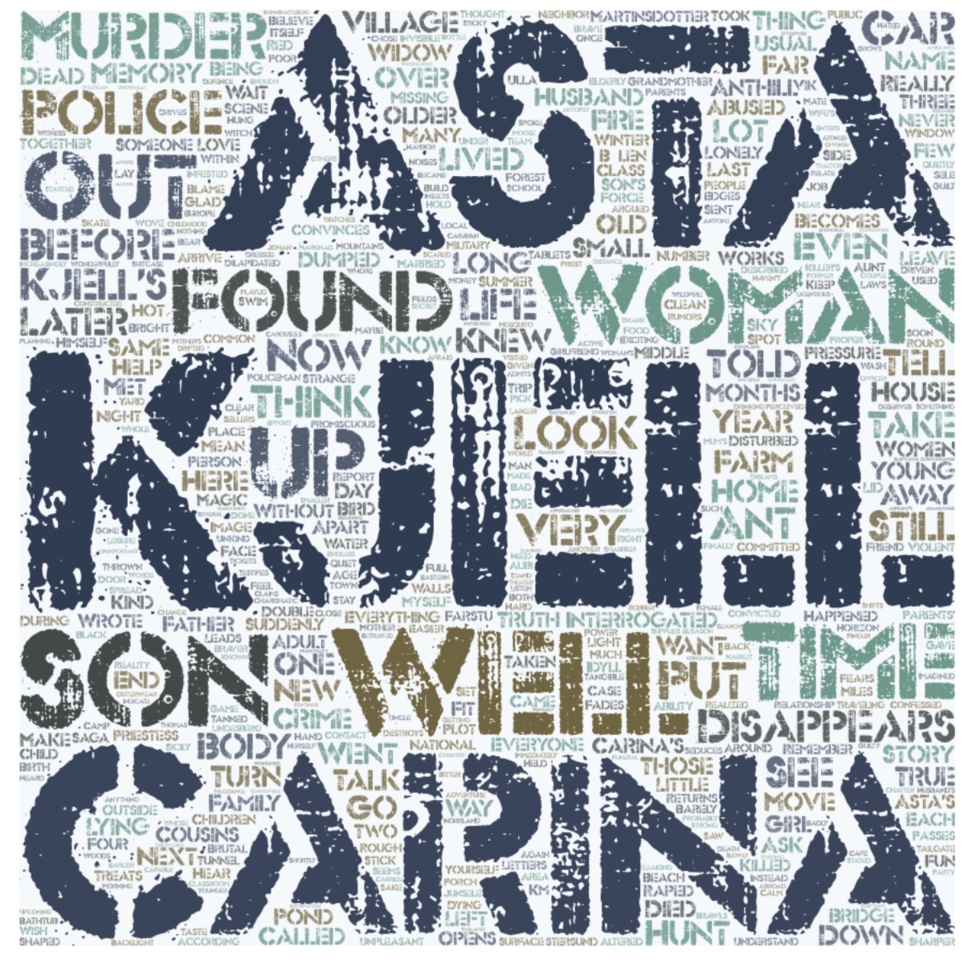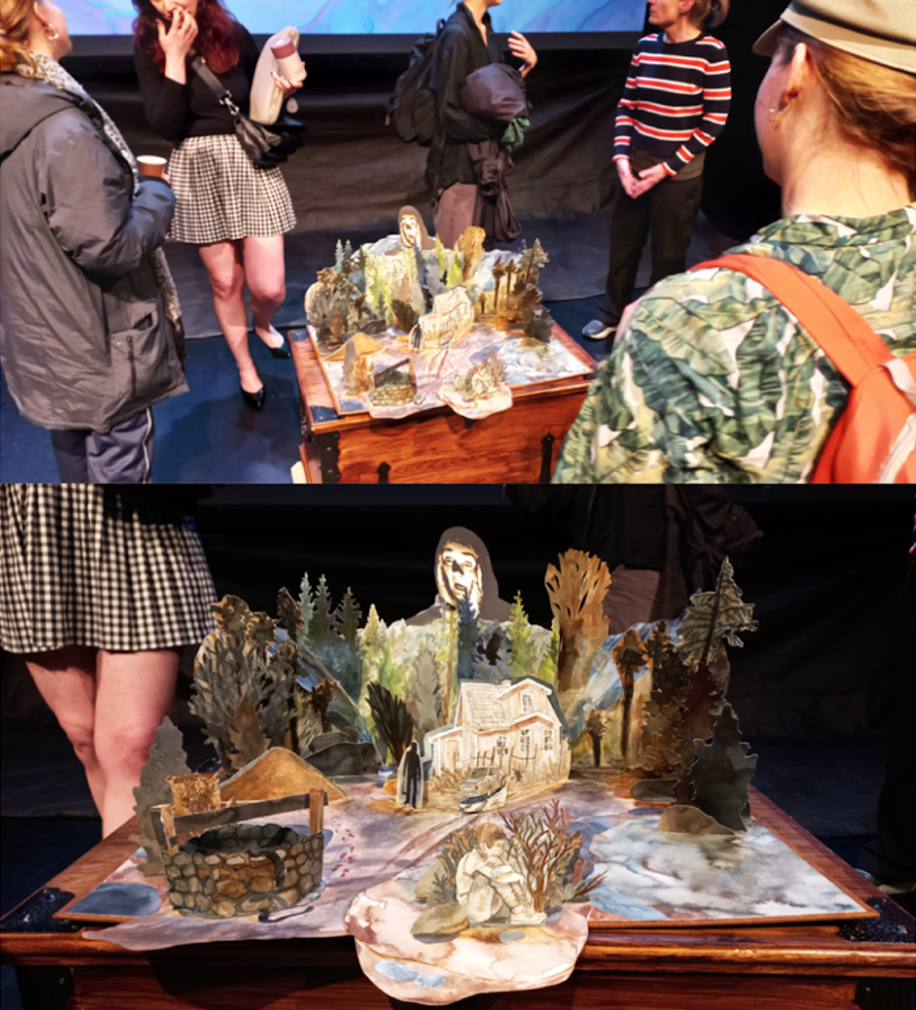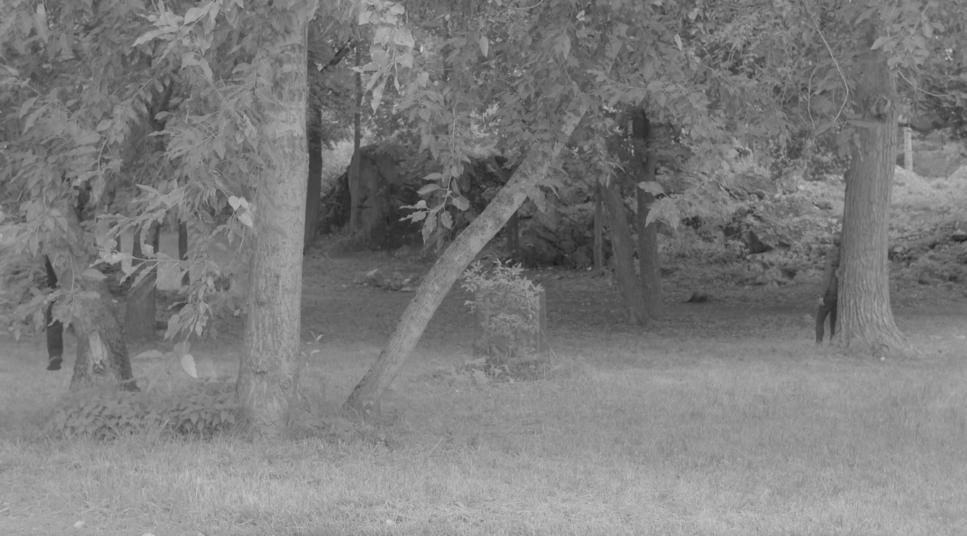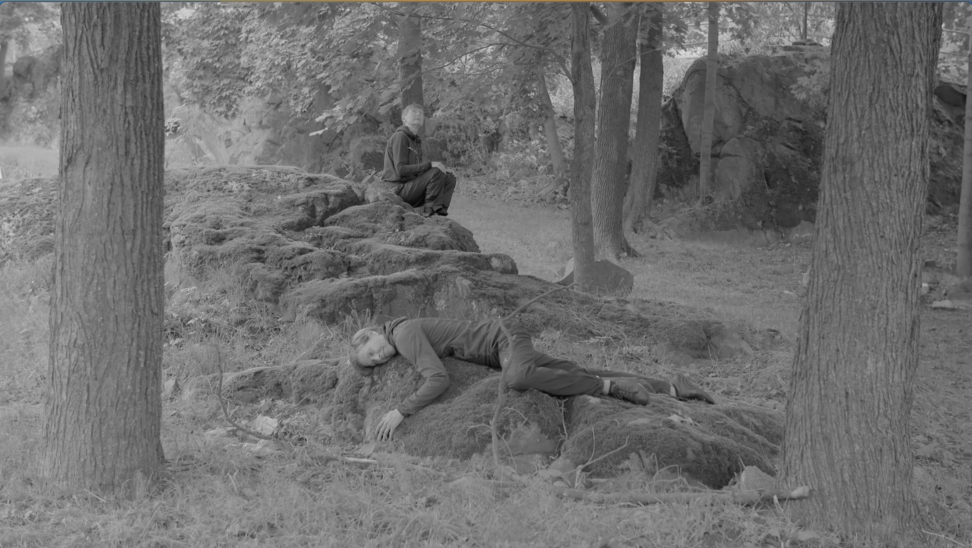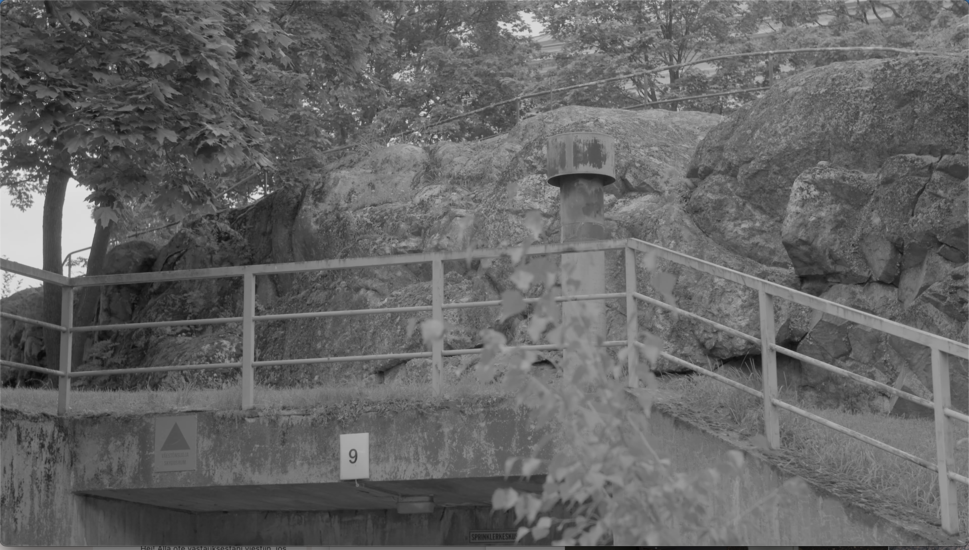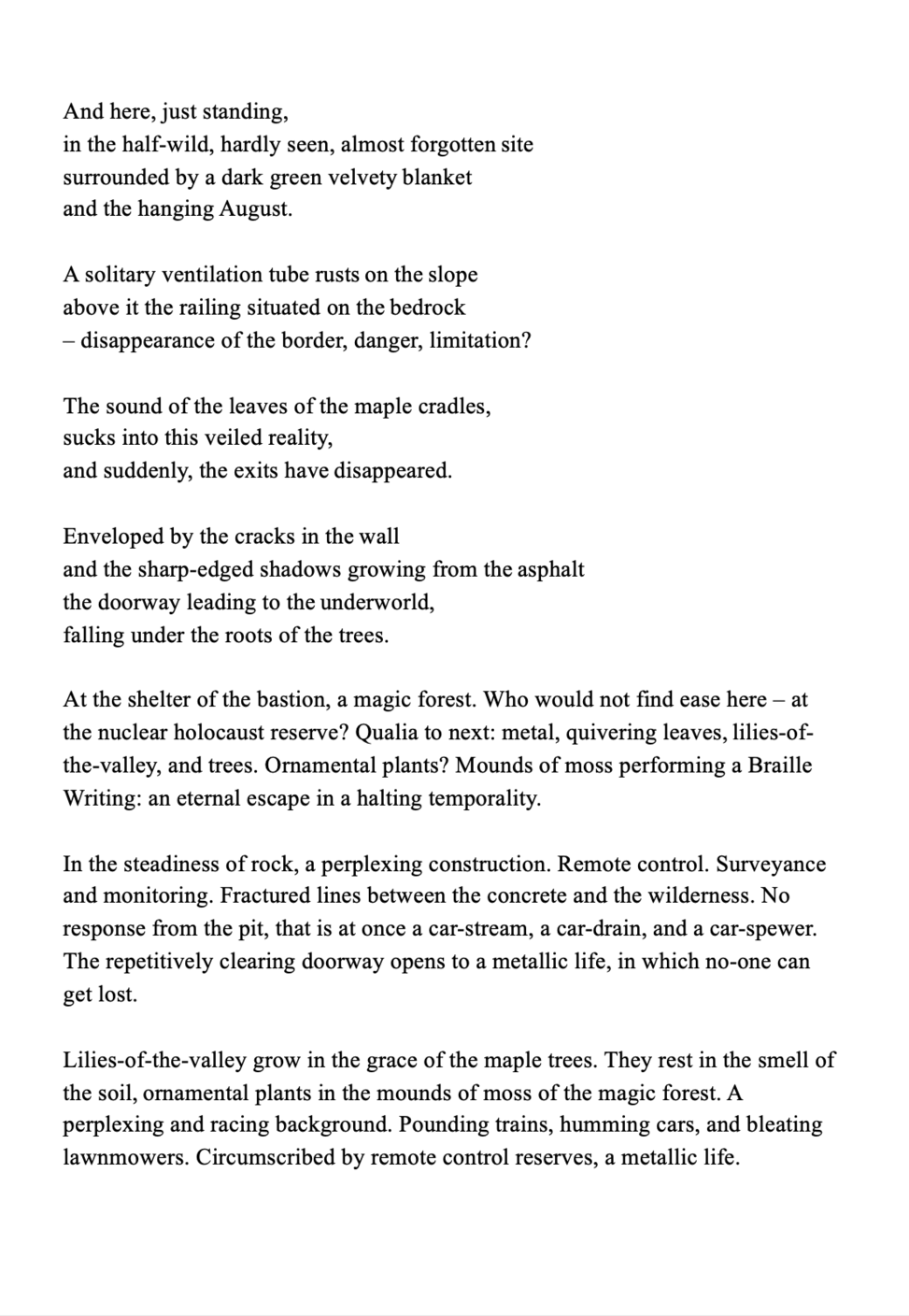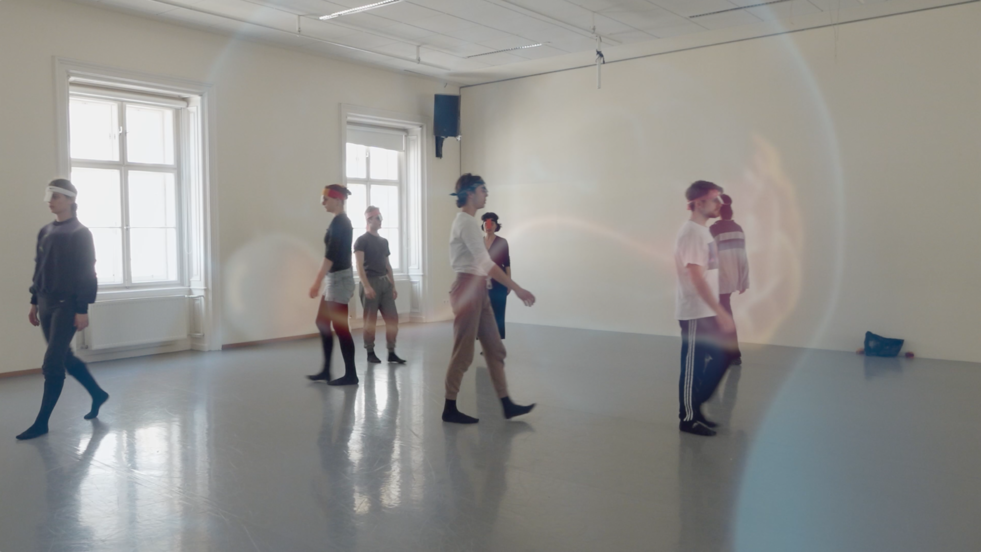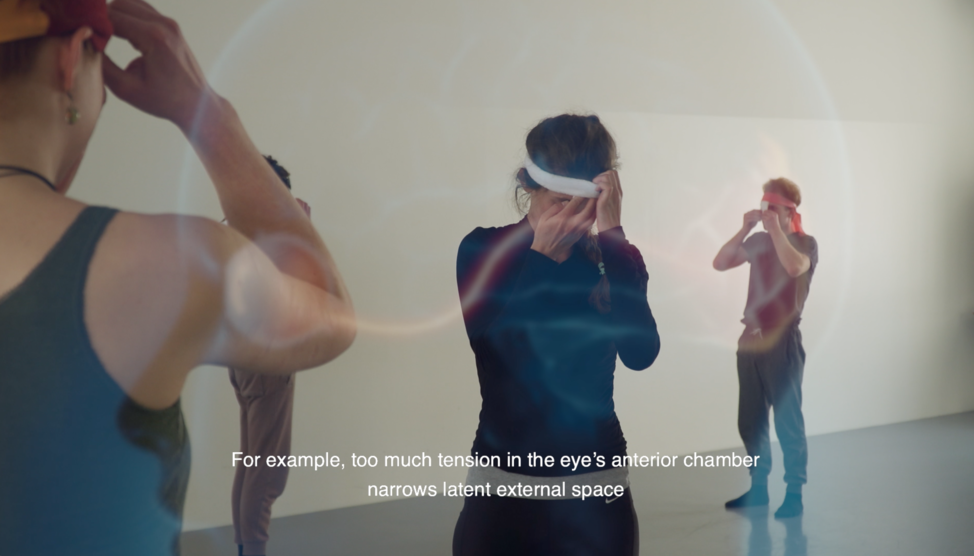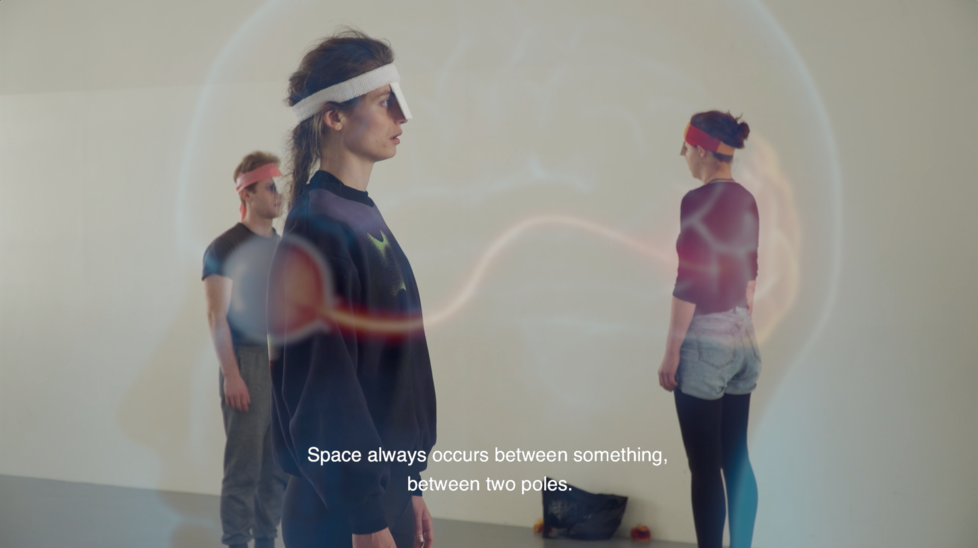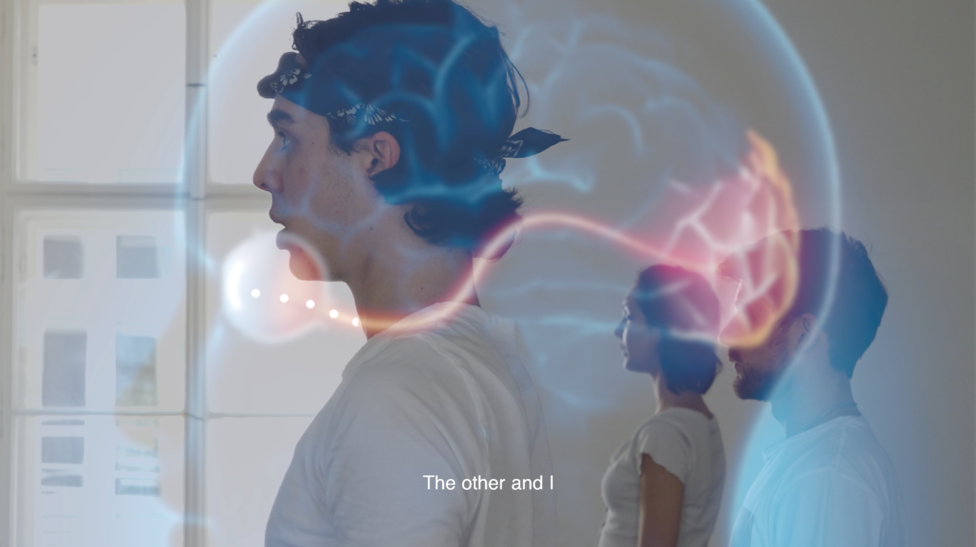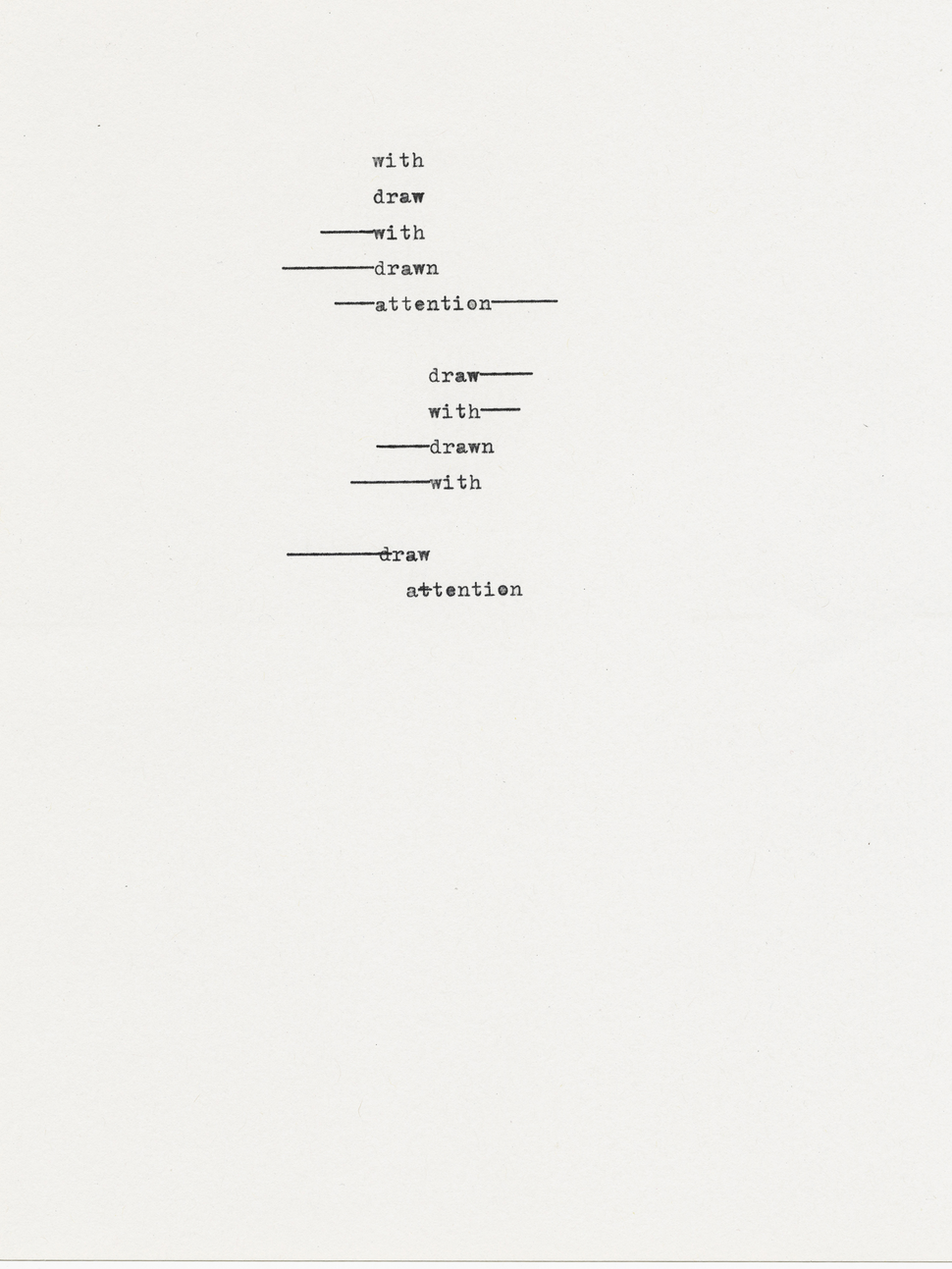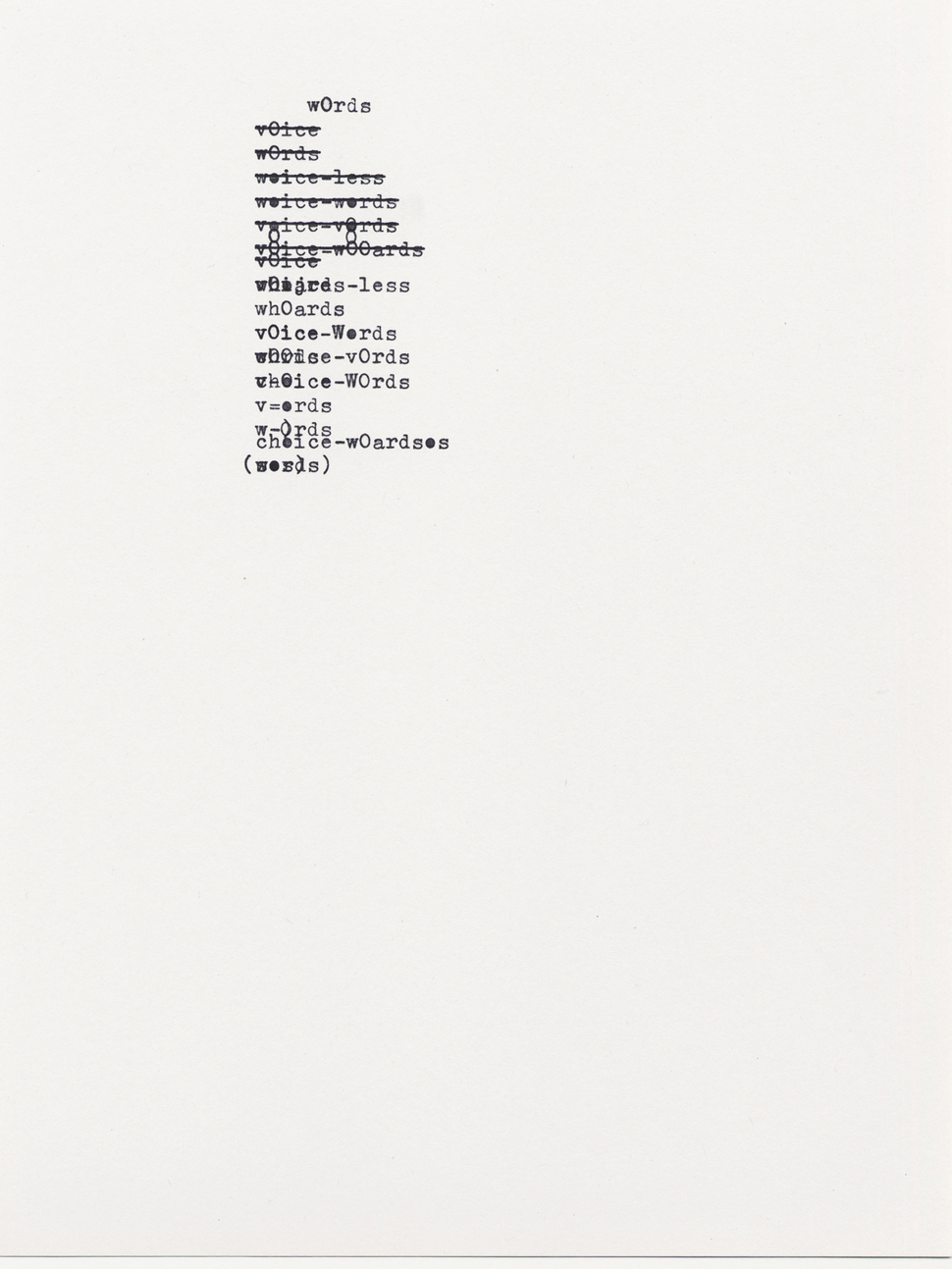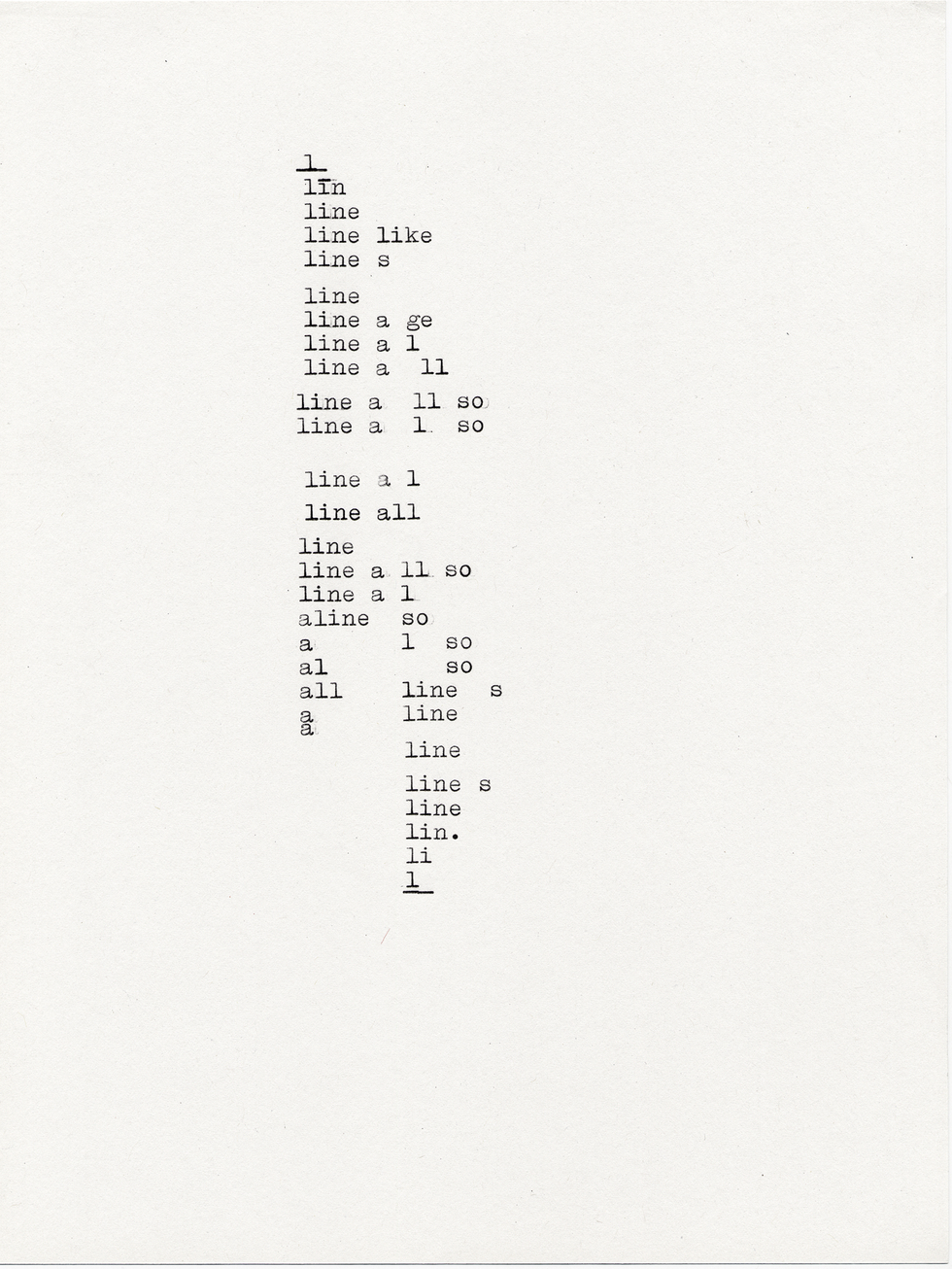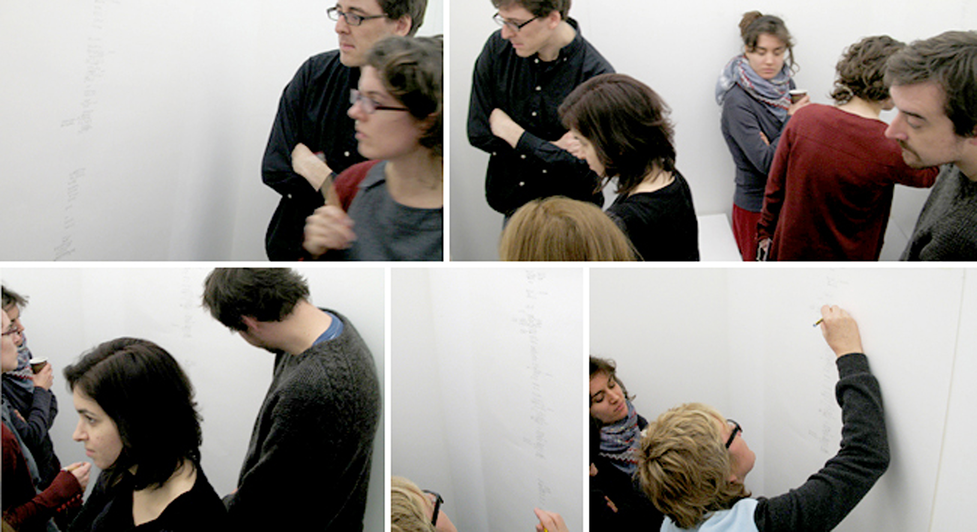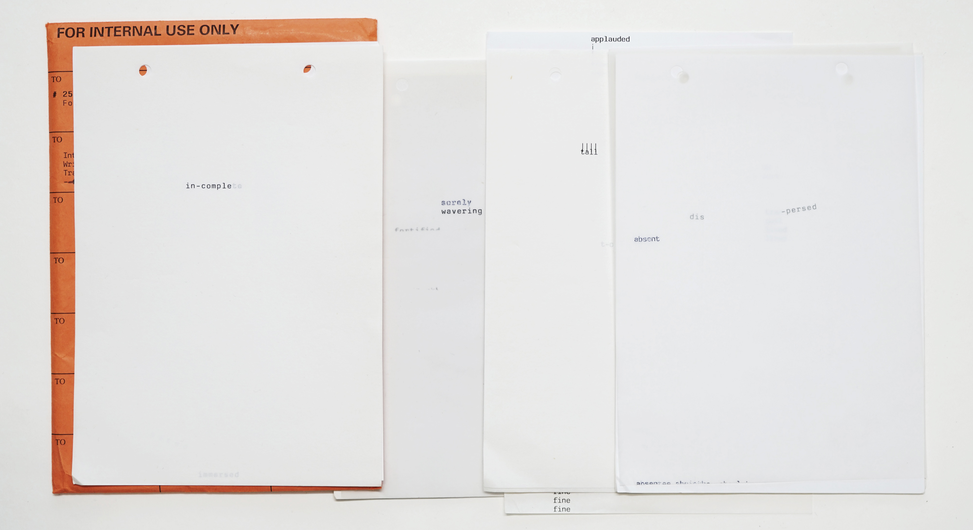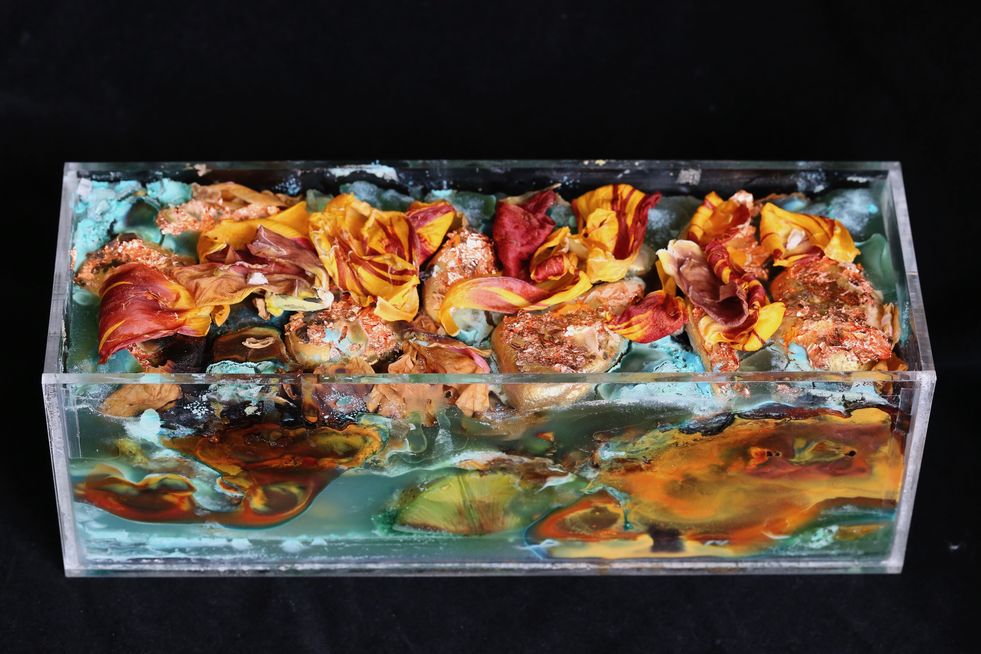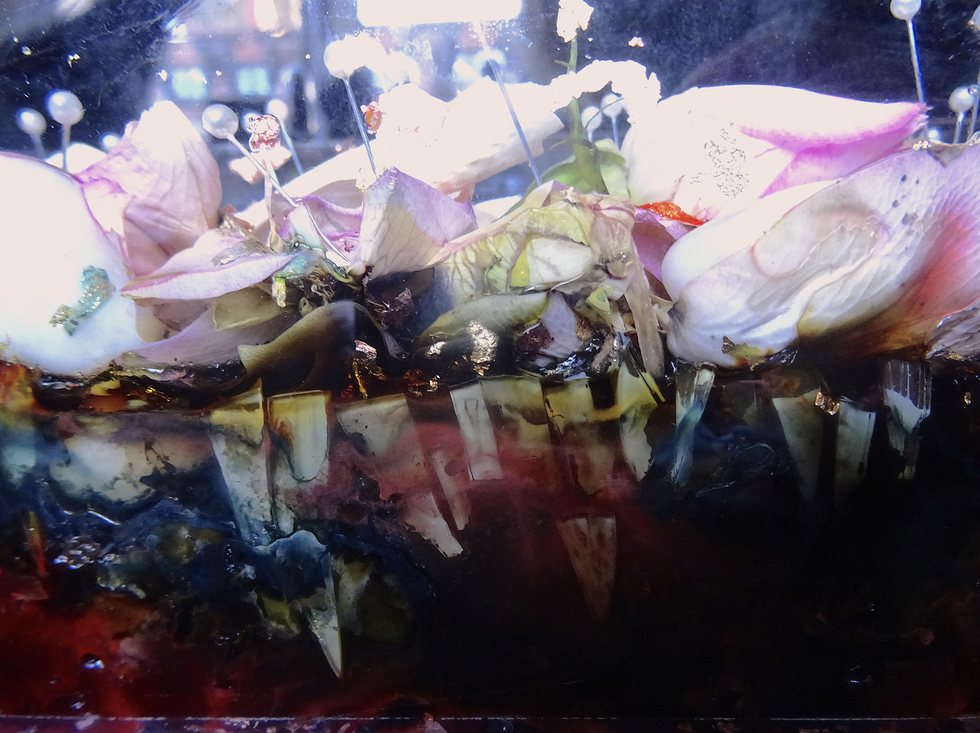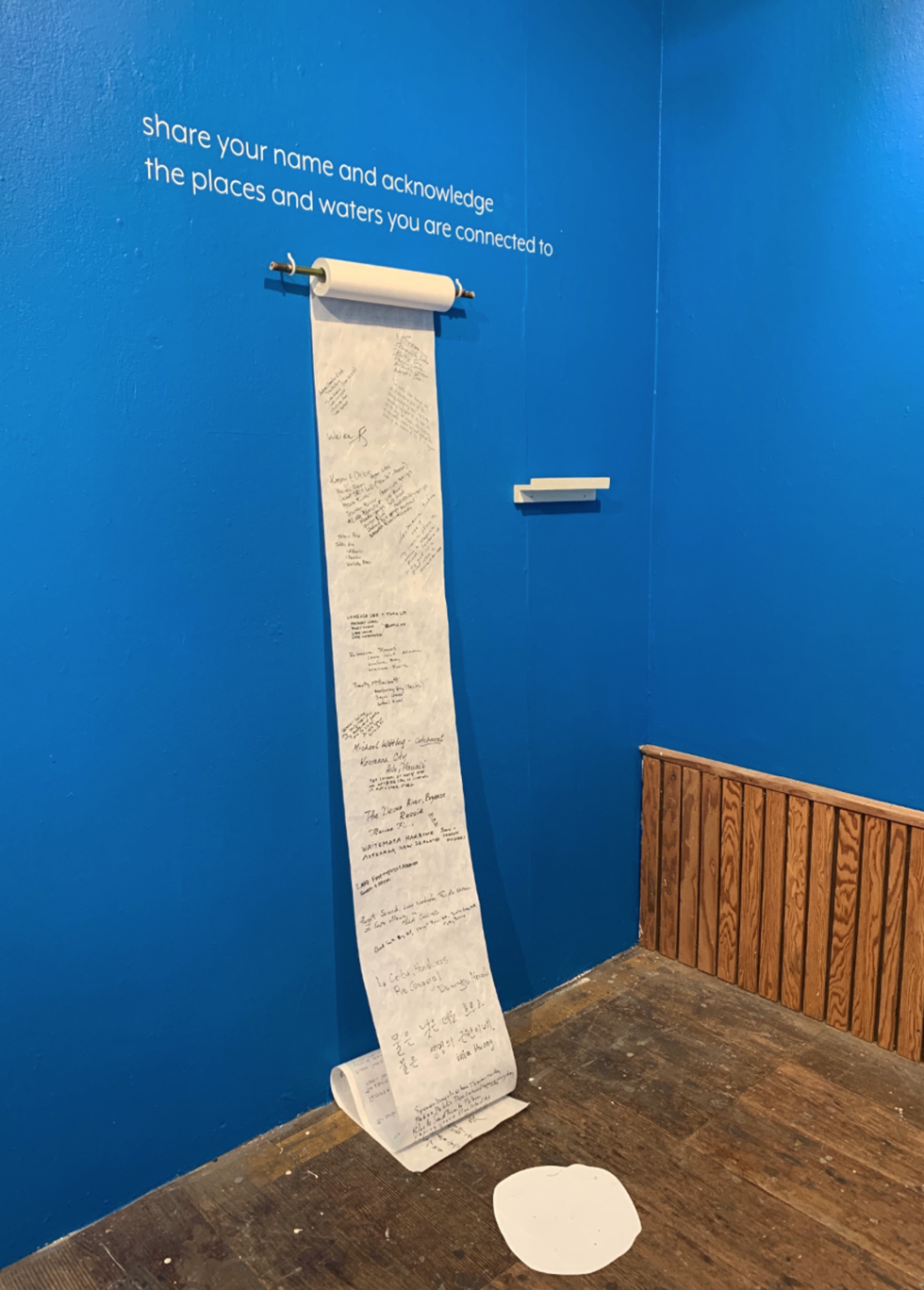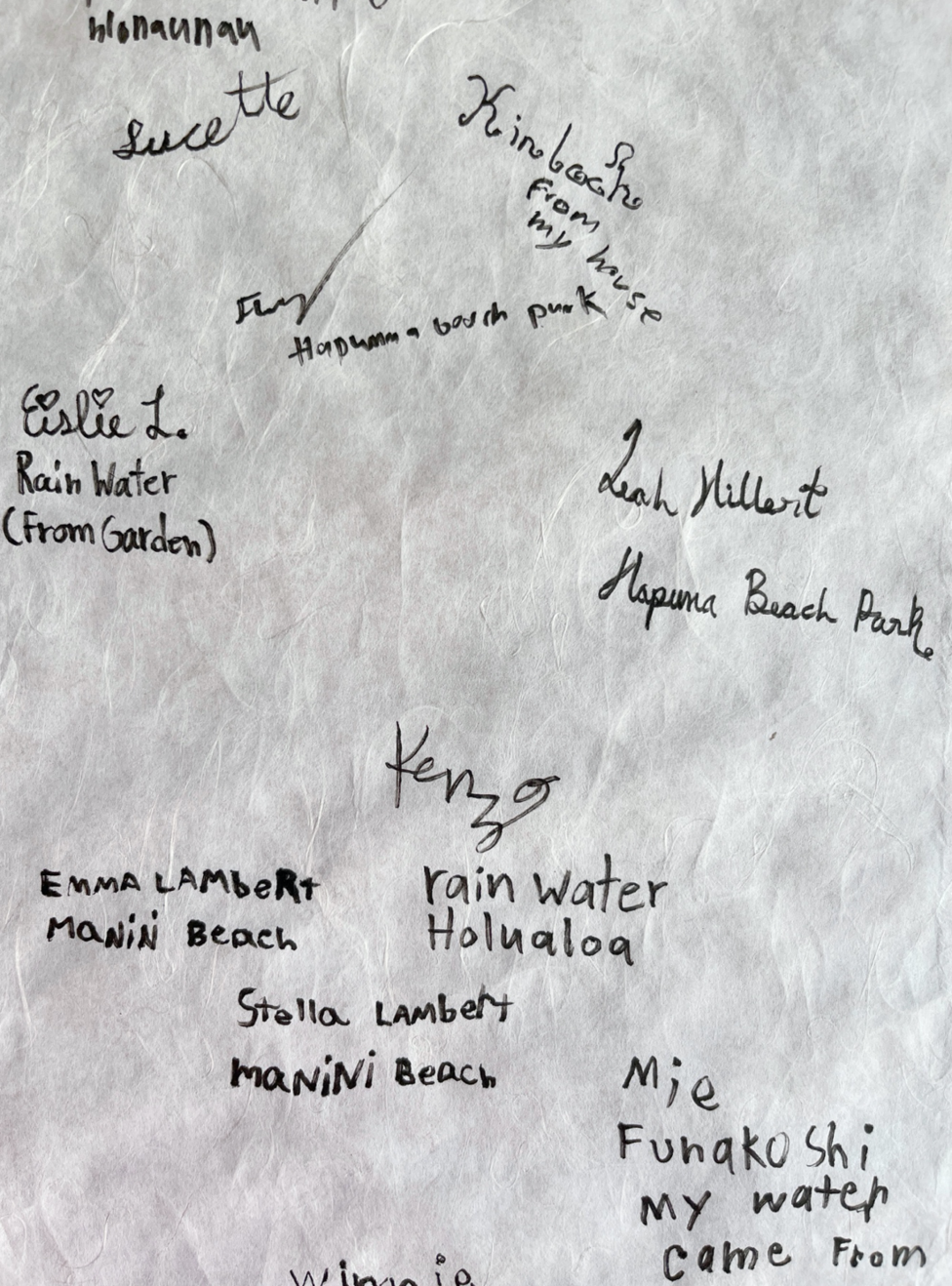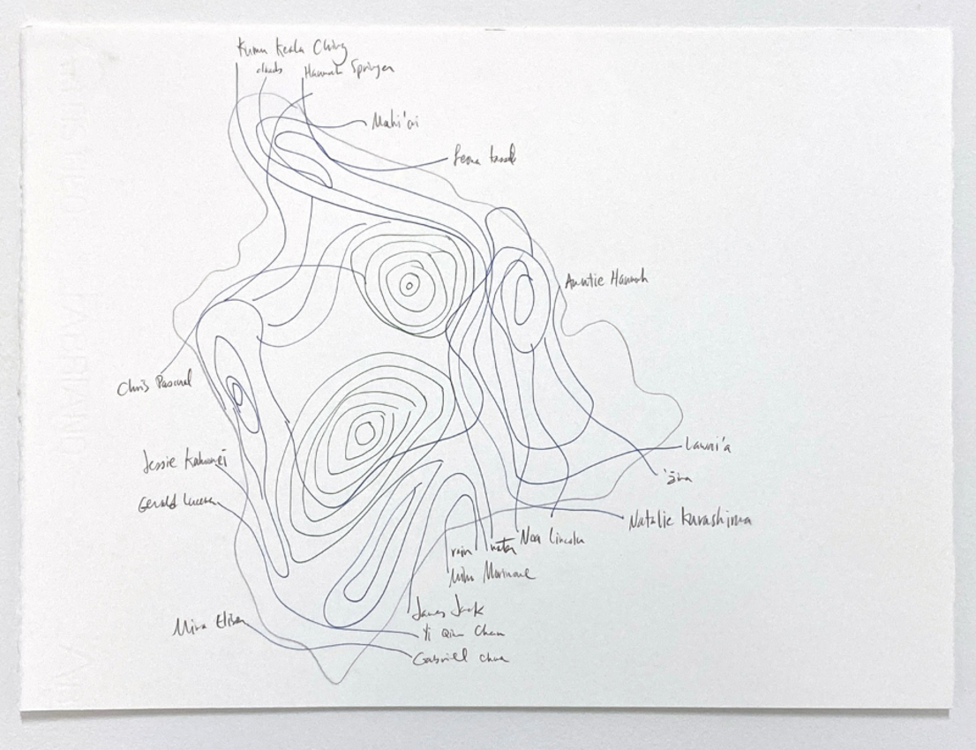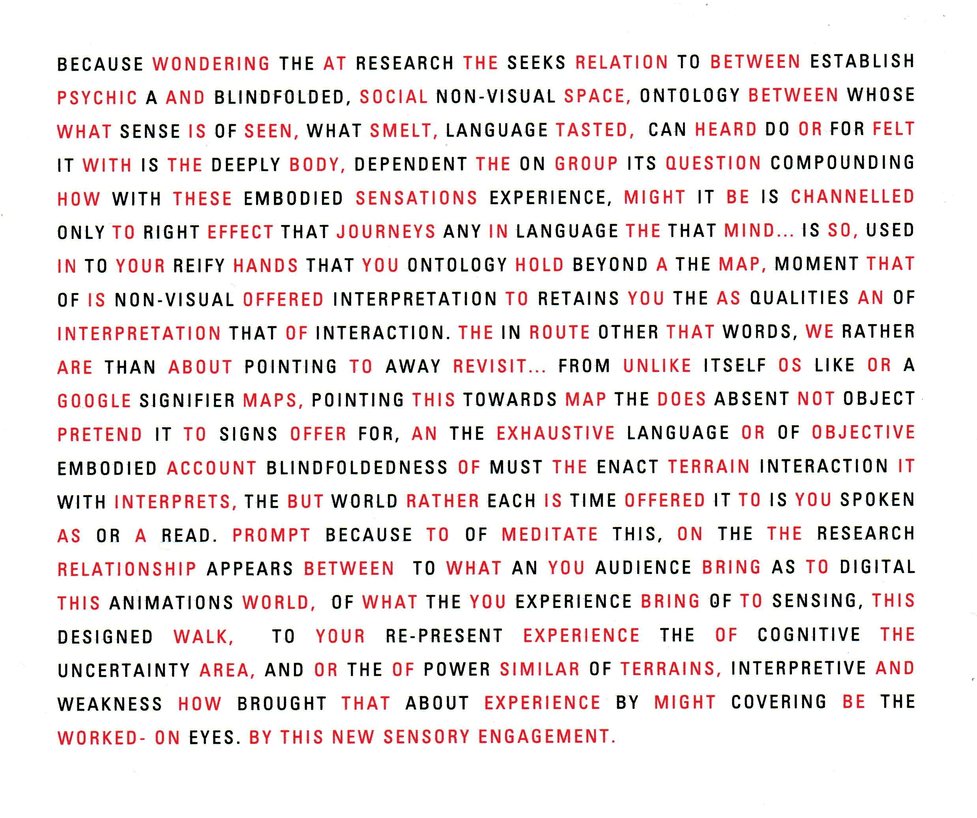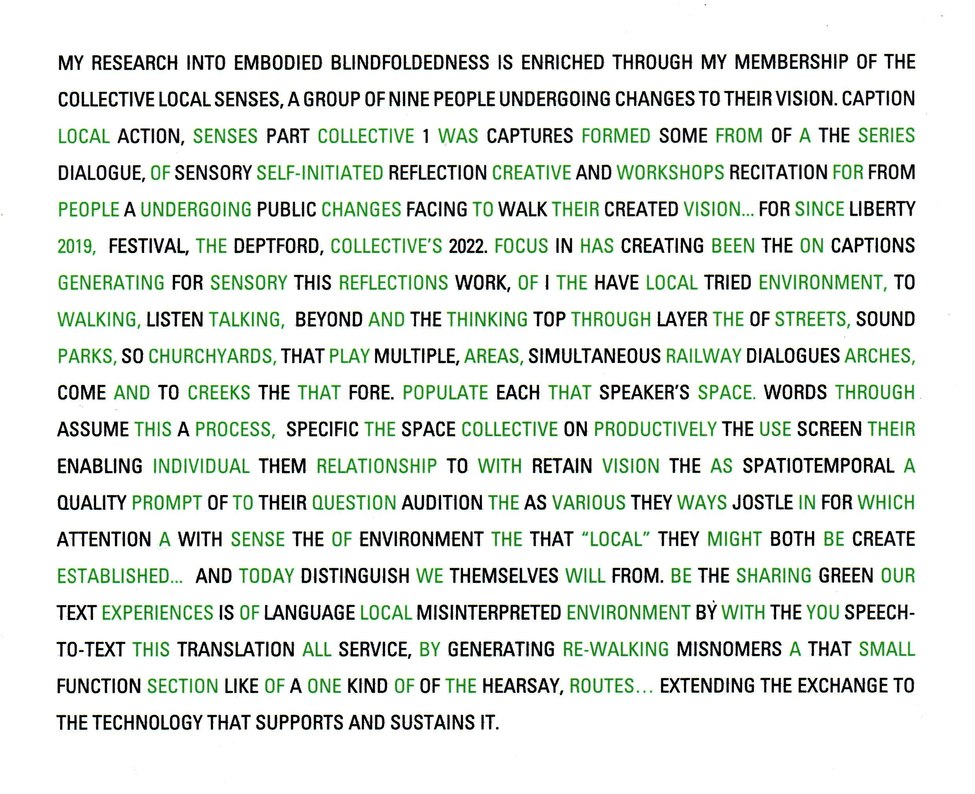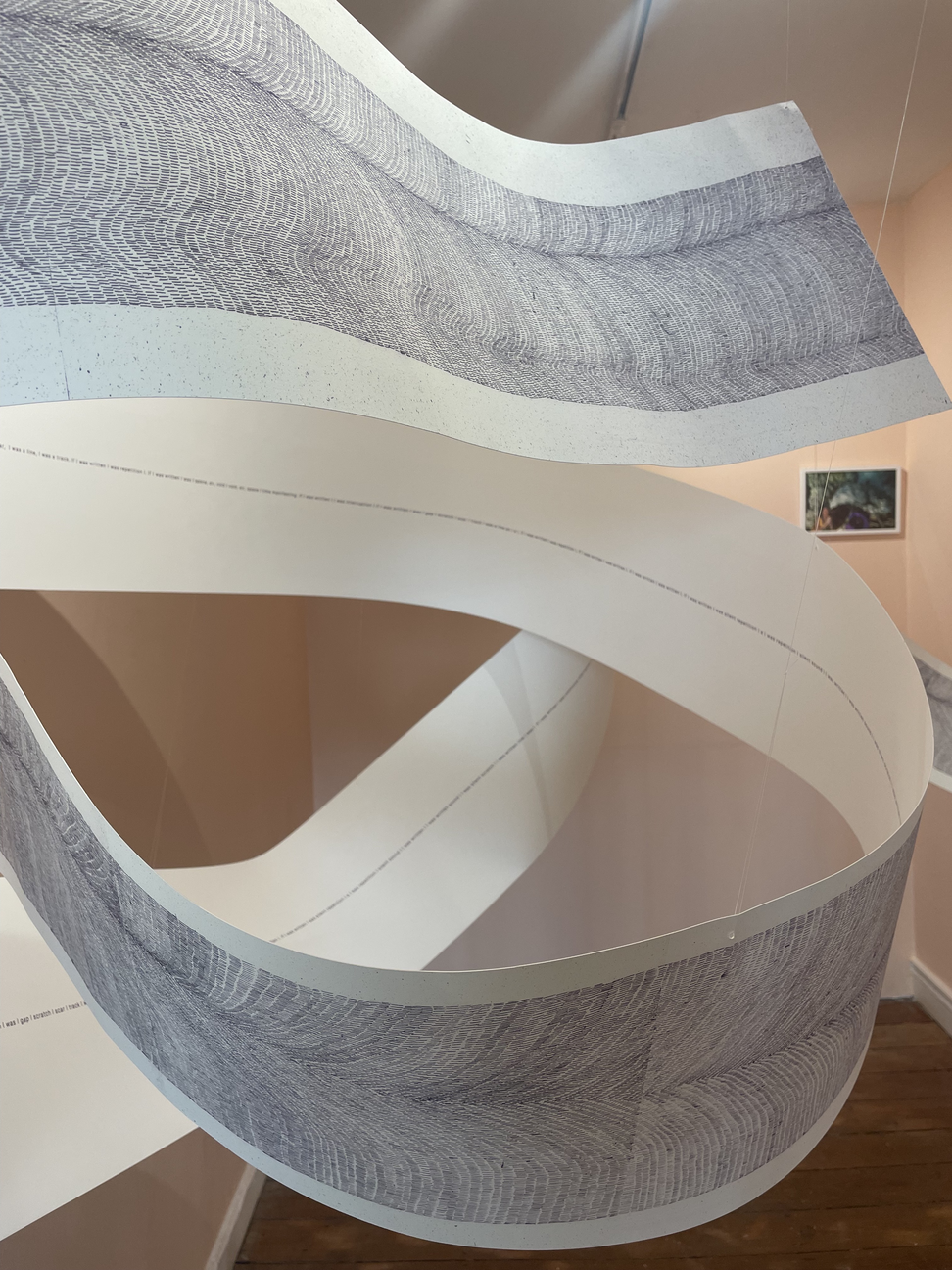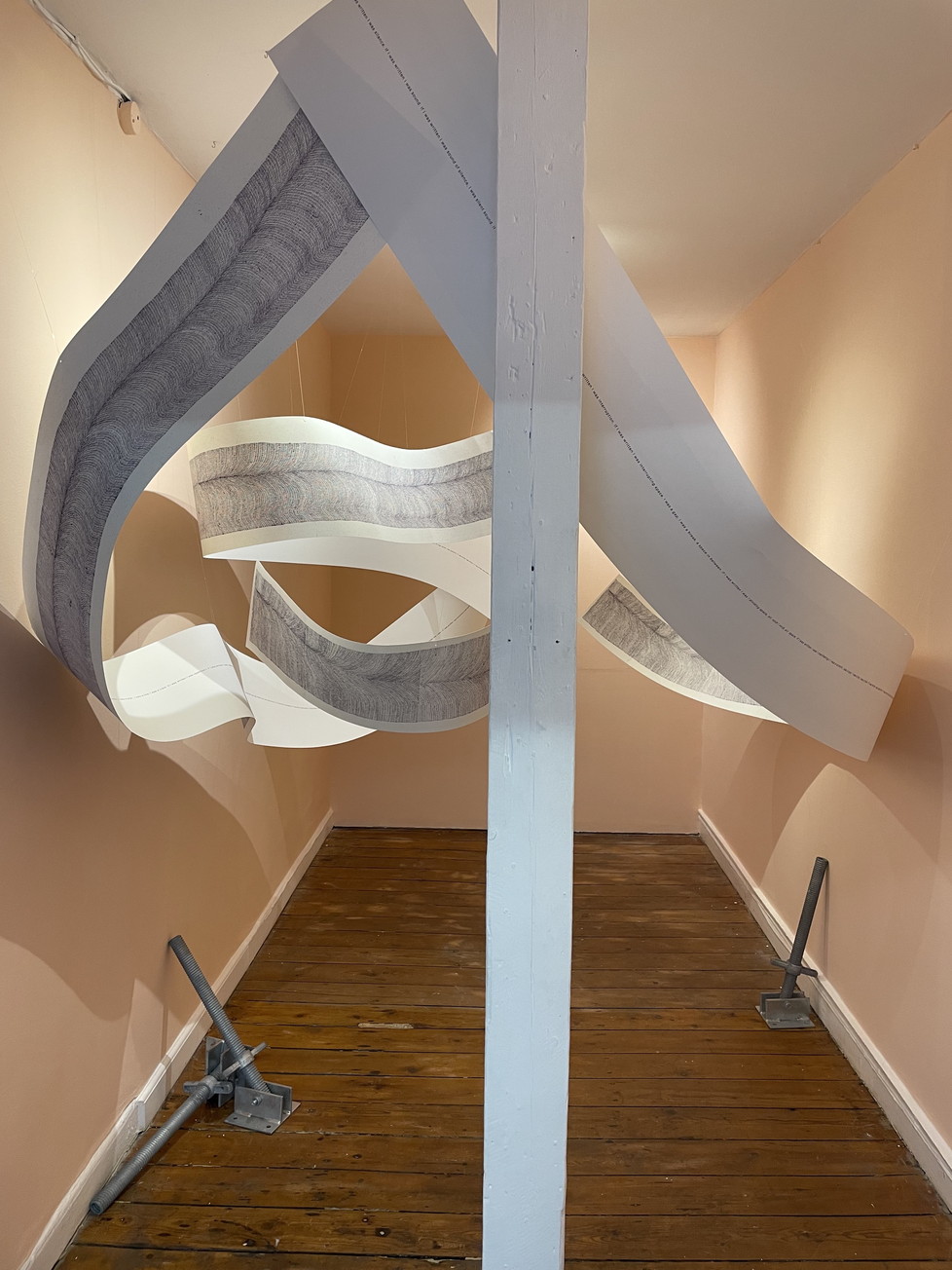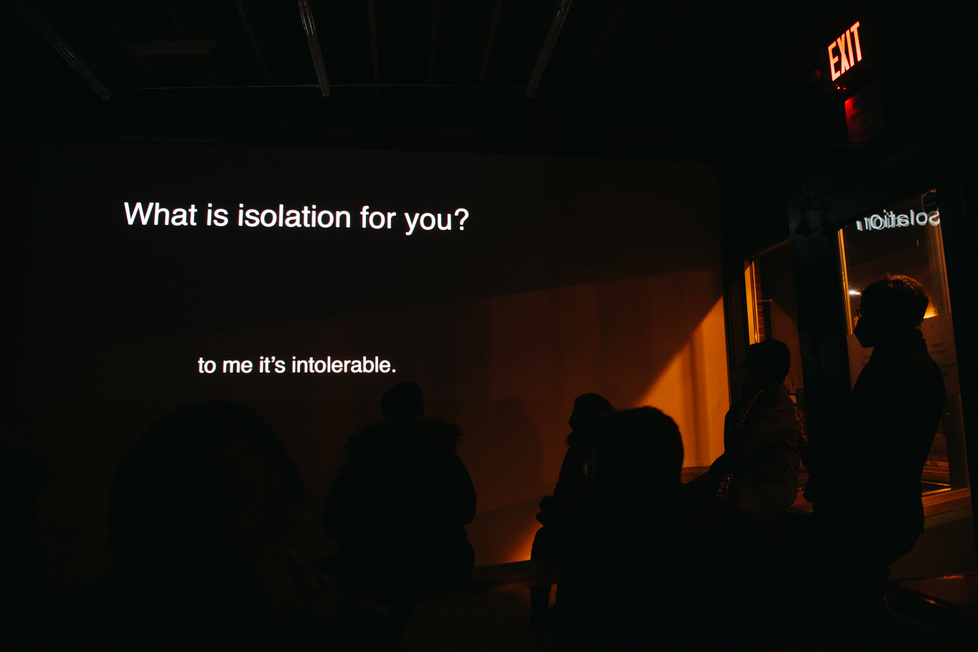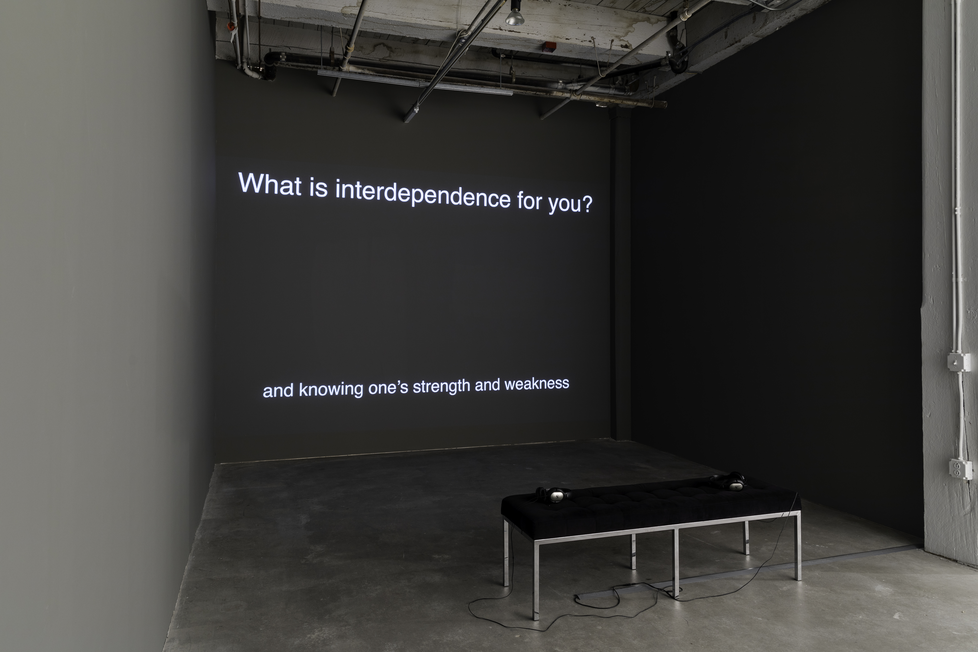Mamdooh Afdile, Maria Hedman Hvitfeldt, Alexander Skantze
adaption
interpretation
visualisation
theme-driven
collaboration
rosie heinrich with An_assembling_“I”
(re)verbing
assemblying
relation-oriented
re-fusing
intra-being
embodied blindfoldedness
dialogic co-creation
psychosocial aesthetics
ontographic re-presentations
weak thought
Kirsi Heimonen & Leena Rouhiainen
choreography
embodiment
site
collaboration
phenomenology
<< Maria Hedman Hvitfeldt, Mamdooh Afdile, Alexander Skantze
Exploring them-driven storytelling is a research enquiry involving Maria Hedman Hvitfeldt, Mamdooh Afdile and Alexander Skantze. The cinematic language of (conventional) film is dominated by classical Aristotelian structure with a clear beginning, middle, and end, main characters, and a progressing plot. Although this kind of dramatic structure has proven beneficial in telling engaging stories, many stories fall outside these structures (real-life stories, spiritual stories, non-rational stories, etc.). Telling such stories in the classical way (on the textual or visual level) might consequently require a significant artistic compromise to fit within this structure. The purpose of this research was to investigate the potential of the theme-based storytelling approach as a means of inspiration for telling a compelling story that is too complex to be told classically (e.g., a spiritual story driven by memory or lacking a clear protagonist). In a collaborative work, this artistic research group has examined a theme-based approach in three practices: writing a story, visualizing it, and adapting it to a screenplay. Namely, the process includes the following stages i) Writing a story inspired by a true/fake memory as them (by Maria Hedman Hvitfeldt), ii) visualizing the story while remaining true to the theme (by Mamdooh Afdile), and iii) exploring thematic vs. classic screenplay (by Alexander Skantze). The findings were publicly presented at an artistic research seminar at Stockholm University of the Arts in January 2023.
Story visualization is the translation of a text into a visual language. As visualization carries limitations (not everything can be visualized), it often involves emphasizing certain aspects of the story over others. Arguably, to protect the original theme of the story from being distorted, one needs to identify thematic components that carry significance to be prioritized in the visualization stage. Here, I share my practice in thematic story visualization using Word Frequency Analysis (WFA) to create a pop-up book (“Memories of a Murder”) based Maria Hedman’s story. WFA quantifies the number of times every word is repeated in the text. My assumption here is that words that are repeated more frequently carry significance. This is illustrated in Figure 2, where the size of the words represents how frequently they were repeated in the text. As shown in the figure, the biggest words are the names of the main characters and motifs in the story. This is an indication of WFA's ability to identify leading factors and themes in the story. However, sometimes a significant action is mentioned only once in the story (e.g., an act of killing can take place once in the story but carry big significance). Therefore, WFA should be used as a complementary method and not an alternative for reading the original text. Finally, WFA is a text analysis tool that can be found on a number of online platforms for free, which makes this method feasible for visual artists working with text visualization with no computational skills.
CREDITS
1. Mamdooh Afdile, Word Frequency Analysis (WFA) to create a pop-up book (“Memories of a Murder”)
2. Mamdooh Afdile, pop-up book (“Memories of a Murder”)
3. Video documentation.
Filmmaker and concept artist: Mamdooh Afdile
Story and narration: Maria Hedman Hvitfeldt
Pop-up and illustration: Lena Ignestam
Music and mix: Kent Olofsson
I´m a scriptwriter and a director. The translation of words to the frame and the difficulty in communicating is fascinating. It´s not a question about me wanting to solve conflicts but about how to make others feel the text I´ve written and all it contains, to choose, the gaps, sensations, the meaning that we can´t see in letters and words.
As a director, when writing a synopsis for other artists to use, I need to convey both information and emotion through the language I use. In this example, ‘Writing a story inspired by a true/fake memory as a theme’, I explore letting my text and its theme become construction tool for both my memory of a crime as a young woman, but also as a ruthless discovery of my own shortcomings as a human being. Since the story I am writing is based on real events, I decided to avoid using traditional dramaturgical approach, monitoring my writing carefully, I relied on using poetic language as a strategy (which I often use in my practice). First, I wrote down my memory of the brutal crime I wish to write about. Then I undertook research into the crime itself, including reading the entire police investigation. I could feel the harshness of the reality taking over, and I did not want to leave the poetry language. The issue about the victim’s invisibility got stronger along the way, and I didn’t want her to disappear in my writing as “she” does in so many of such stories. I allowed myself to destabilize my own project, jumping back and forth between clarity and confusion in my process. Interestingly, this made me realize the solution was in writing with all my senses. This exploration of story writing, led by a theme (memory of a true crime) through poetic language, seems to carry a dual potential: firstly, as a cathartic practice for the author dealing with traumatic memory, secondly, as a more free approach to unconventional storytelling practice.
LINK TO - Writing a story inspired by a true/fake memory as a theme
Throughout my career as a screenwriter, dramaturg and teacher of screenwriting, my fascination with narration’s interplay between structure and content has grown deeper and deeper. The mystery of how the most minuscule of adjustments in the text – a change of perspective, tonality or genre – can generate radically dissimilar stories. The ‘murder narrative’ at the centre of Maria’s project – with its slaying of the innocent female – can be understood as one of the cornerstones of Western film and TV, with its narrative principles provided by classical Aristotelian theory. These are principles which I myself have been trained in and which I have hitherto primarily used. Building upon Kerstin Stutterheim’s and Marja-Riitta Koivumäki’s systematic analyses of epic and contrast-based alternative (that is, anti-Hollywood) dramaturgy, I formulated a set of thematic narrative principles, which I then applied in this project. Based on Maria’s story material, I wrote two short screenplays. One Aristotelian and causal version; and one epic, theme-based and non-chronological version – for me, a new way of working. The resulting screenplays are very different – through using the theories of Koivumäki and Stutterheim as precepts and framings for screenwriting - different methods, different truths emerge.
<< Kirsi Heimonen & Leena Rouhiainen
Site-Specific Writing as Choreography
Drawing on the backgrounds of dance practice and artistic research, during the past few years we have been developing a novel approach to choreography that highlights it as a textual writing practice, a form of site-specific embodied writing. This approach involves embodied exploration of inconspicuous features in urban settings as well as poetic collaborative writing as a form of presenting textual choreography deriving from this exploration. The objective is to allow the impact of the bodily sense of being in contact with the chosen urban locations to permeate our activities in writing. We therefore expand choreographic practice by investigating the connotations related to location and emplacement, bodily movement and writing that the term choreography implies. Deriving from the Greek words choreia and graph, etymologically the term relates to movement, dance and rhythm, notions of space or region as well as writing. We likewise associate with such choreographers who are interested in philosophy and critical theory and who consider reading, writing and discussing methods of their artistic practice. In our collaborative processes customary choreographic practices are integrated with concepts, texts, and language. We emphasise the motional and evocative opportunities words and text offer for conveying the sense of site-specific bodily encounters, embodied relating and emplacement.
In the following we present the first two phases of the phenomenologically influenced score that informs our site-specific exploration and choreographic writing. We begin by choosing a distinct urban site in which begin working on the score.
Phase 1
1. Explore the site by being attentive to how it resonates in and extends your body. Move in response to it. After some time in the site and sensing its impact respond by writing down single words or two-word phrases in your notebook.
2. In the next few days, allowing the impact of the site to linger with you and using the words written at the site, write five to ten sentences, again conveying the sense of the contact with the site.
3. Then send your words and texts to each other.
Phase 2
Allowing the silent impact of the site as well as the resonance of the already written words and sentences to inform your writing:
1. Write sentences or a short text by using the first list of words that you yourself did not generate.
2. Write sentences or a short text by using the first sentences that you yourself did not generate.
Then send these new sentences or short texts to each other and use all the previously produced texts in the next phase of writing.
CREDITS
1 – 3. Images are screen captures from the short film: Writing the Shadow as Choreography (2021) for which the previous text was generated. Concept, choreography, text, and speech: Kirsi Heimonen and Leena Rouhiainen; cinematographer: Raimo Uunila; recording and sound designer: Antti Nykyri; editing: Kirsi Heimonen, Leena Rouhiainen, and Raimo Uunila. Kirsi Heimonen and Leena Rouhiainen Ó
4. An Example of Textual Choreography. The text was produced by following the score in the Tarja Halonen park in Helsinki (2021).
<< rosie heinrich with An_assembling_“I”
What would a relation- and process-oriented language feel like to speak and think with?
What could this way of thinking and being enable?
“It matters which thoughts think thoughts.”
—Donna Haraway, thinking with anthropologist Marilyn Strathern
Working in collaboration with a porous and changing collective, An_assembling_”I”,* we probe into language and grammar to engage a necessary unlearning in ways of relating with Earth, one another, ourselves, and language itself.
The research is underpinned by studies into the wide-reaching implications of “hospicing modernity”. 1 We explore the unravelling and deconditioning of the grammars of separation — the abolition and dissolution of the “individual” as a centring concept, for example — which have dominated ways of living and relating in times of modernity/coloniality. To our collective harm, in different and uneven ways.
Seeking to interrupt and compost habitual modes of reading and listening, and gesture towards different ways of being and relating, we burrow into the etymological, animate stories of words and letters. We learn about the verb-based realities of quantum physics, and land-based languages that have embodied this verb-based knowledge for thousands of years. We evolve notation systems re-membering the gut-brain, heart-brain and expansive embodied-brain into these conversations.
An_assembling_“I” is an experiment in collaborative studying, practicing, writing and making. Care and emergence are core guides. With thanks for timeless time shared with more-than-human worlds, to Andrea Acosta, Dr. Simona L. Brickers, Nzingha Clarke, Katrin Hahner, Daisy Hildyard, Sepideh Karami, Ruth Legg, Fabrice Olivier Dubosc, Mary Stewart, Céline Wouters, and many others across a meshwork of study groups, thank you Knockvologan residency, Miek Zwamborn and Rutger Emmelkamp, on the Ross of Mull, and Nida Art Colony, on the Curonian Spit, and for the support of AFK.
* An_assembling_”I” shape-shifts with different names: A_fielding_“I”, A_collective_“I”, An_assemblying_“I”, A_re-verbing_“I”
1. Vanessa Machado de Oliveira Andreotti, Hospicing Modernity: Facing Humanity’s Wrongs and the Implications for Social Activism (the unceded Ohlone land Huichin* [aka Berkeley, CA]: North Atlantic Books, 2021).
* North Atlantic Books is located in Huichin, the present and ancestral homeland and unceded territory of the Ohlone people.
LINK TO - learn more about A_collective_“I” (first column)
LINK TO - learn more about notation systems
—Refusing the grammars of modernity. Re–fusing the grammars of separability.
How can language enable a vital change towards regenerative ways of living and being? Towards regenerative thinking and relating? Towards imagining otherwise?
Words are alive. Travelling through times and tongues, words hold stories. They turn and change. They move, and can move and change things.
Grammars map relationships between words. They structure our sentences, reflexively. Quietly, quite unnoticed, they guide habits and patterns in how words relate. Not only on a page, but in words spoken. In thinking. In imagining. Grammars shape ways of relating in everyday encounters and perceptions.
What becomes un-thinkable, un-imaginable, within these structures?
Different languages uphold different ways for thinking and knowing, for perceiving and relating. There are, for example, verb-based languages, and noun-based languages. The English language is a noun-based language. It centres nouns. English also bears much weight as an internationally prevalent language, inherent to dominating cultures of modernity, and colonial pasts/presents.
How might the aesthetics of nouns shape a species’s relationships with the world?
By their design, (pro)nouns uphold ways of thinking in categories. Categories contain. They order, separate, fix. Made static, living entities (places, persons, beings, ideas) become framed outside of life’s intrinsic intra-active temporality. Their animacy and intra-being suspended. Life’s intraconnections1 dis-membered.
Many land-based (Indigenous) languages — such as Blackfoot (Siksika) of the Algonquian language family — are verb-based. Likewise, in the quantum realm there are no nouns, there are only verbs.
How might a relation- and process-oriented language, a verb-based language, enable different ways of being in relation — with Earth and different living beings within and around us?
A language of being in-becoming with, in-relation with, in-transition with, …, …, ….
“We are at stake to each other.”
—Donna Haraway
The video excerpt shows initial work-in-progress by An_assembling_“I” who clay together with these questions.
1. Dr. Dan Siegel, IntraConnected: MWe (Me + We) as the Integration of Self, Identity, and Belonging (New York: W. W. Norton, 2022).
CREDITS
1. Ancient conversations (work-in-process, 2023), rosie heinrich with An_assembling_"I".
2. Ancient conversations (work-in-procress, 2023) video excerpt, rosie heinrich with An_assembling_“I”, and includes a quotation from evolutionary biologist Lynn Margulis.
Mit den Augen atmen,
mit den Ohren sehen,
mit dem Mund hören.
Die Praktizierenden gelangen in eine neue Spannung in ihrem Antlitz, dem Gesicht. Es wird der Versuch unternommen, dass nicht mehr sie die Dinge anschauen, sondern Die Welt schaut die Praktizierenden an. Der Raum zwischen den Sehenden, den Objekten und Personen wird neu erfahrbar und das Sehen geht nicht mehr von den Sehenden aus. Körperfunktionen verlassen ihre gewohnten Mechanismen, die Körperoberfläche wird größer und weiter. Die Welt konnte mich tatsächlich befragen. Die entstandene Resonanz zeigt den Wechsel zu einer neuen Erfahrung, aus welcher eine Intensität hervorgeht. Aus meiner Beobachtung heraus klingen Antworten persönlicher und erzählen aus den Archiven der Praktizierenden heraus. Die Praktizierenden lassen die Archive anhand körperlicher Reaktionen wieder auftauchen, im wahrsten Sinne des Wortes.
Effekte:
Atemintensität
Klangfülle
Plastizität
Visualität
Räumlichkeit
:::::::::::::
Breathing with the eyes,
see with the ears,
hear with the mouth.
The practitioners allow a new tension into their faces, into the face. An attempt is made to no longer look at things but allow the ‘world’ to look at the practitioners. The space between who/what is ‘looking’, objects and people, is experienced in a new way; seeing no longer emanates from the observer. As bodily behaviours extend beyond habitual processes, the surface of the body becomes larger and wider. ("The world could actually question me.") The resonance generates a shift. The intensity of a new experience emerges. ("From my perspective, responses sound more personal and tell stories from the memory archives of the others"). Practitioners literally allow the archive to resurface through bodily responses.
Effects:
Breathing intensity
Tonality
Plasticity
Visuality
Spatiality
CREDITS
1. SEE video especially section 0:53 - 1:10 mins
2. Still from video on 'breathing with the eyes'
3. Still from video on 'breathing with the eyes'
<< Steffi Hofer
As a phonetician and speech scientist, I train acting students in text, voice and speaking at MUK, Vienna, and coach Burgtheater actors. My practice focuses on the ability to internalise the plasticity of what is seen – not only to look at spaces and objects but also to create a dialogue with them through seeing. The body metabolises this relationship and allows it to reappear in thought and spoken language. Breath is my main material, an expression of spatial capacity. I work with the unused intrapersonal and architectural spaces in between – latent spaces. These practices trigger an extension of the body. ‘Body archives’ open up, their essences reappearing vocally in the spoken word. We know archives as places that store the past; we usually spend time in them for specific purposes. However, we are rarely aware of body archives. They are accessed as the body expands and surprise us in spoken expression. Body archives are located in the joints, transition points that hold the true self. Our way of seeing determines the narrowness or wideness in us. Transitions indicate intentions, which enable the reinvention of texts. The stories we carry within us, from the generations before us, come to light. The presence or absence of individuals in spaces begins in their perceptual capacity and becomes legible through speech, sonority and resonance. This practice expands imagination, made up of memory, perception and fantasy – an act of ‘resourcing’ hidden potential. The film (presented below within the examples of practice) shows how the field of vision is widened via a space in front of the eyes, thus achieving distance from the eye sockets, preventing a narrow, fixed gaze.
Ich untersuchte mit den Studierenden, welche Zwischenräume sie vernachlässigen und damit ihre Geschichten verkleinern. Wie im Film zu sehen nutzen wir beispielsweise eine Papierfläche zwischen den Augen, um den Überfokus beider Augen zu unterbrechen. Es entsteht eine beidseitige Körperausrichtung, welche nicht mehr der Gewohnheit entspricht und damit Körpersystem und Körperfunktion neu aufruft.
Es ist, als sehen wir mit den Ohren.
Die Aktivierung beider Körperseiten, welche dadurch entsteht, hat in meiner Beobachtung, die horizontale, vertikale und gerichtete Verankerung im Raum zur Folge.
Effekte:
Balance
Anwesenheit
Ausdehnung
Klangfülle
I explored with the students which latent spaces they neglect and thus diminish their stories. For example, as seen in the film, we use a paper between the eyes to interrupt the over-focus of both eyes. This creates a bilateral body alignment that no longer corresponds to the habit and thus calls up the body system and body function anew.
It’s as if, we see with the ears.
The activation of both sides of the body, which arises from this, has in my observation, the horizontal, vertical and directional anchoring in space as a result.
Effects:
Balance
Presence
Expansion
Tonality
CREDITS
See video in previous practice especially section 1:11-1:25 and 1:50-2:05
1. Still from video on 'exploring the latent spaces'
2. Still from video on 'exploring the latent spaces'
<< Marianne Holm Hansen
My practice examines how experience – as knowledge, information and tacit understanding - is formed, communicated, encountered, embodied, enacted and/or understood through established structures, behaviours, habits and, centrally, language. I am interested in how the impact of language, language use and convention, may be understood and exposed, re-appropriated or re-claimed, to open up the potential for new experiences to emerge.
My work is process-based and nomadic to respond to particular sites and situations. I work with language on- and off-the page, through studio-practice, interdisciplinary research, collaboration and, extensively, in-dialogue with diverse communities. I engage with critical pedagogies, relational- and language-focused theories of learning, to extend the potential for creating, or carving-out, more equitable spaces for conversation through conversation. I embrace the collisions of language use and understandings - that collaboration with-and-across disciplines and cultures may bring - as positive-productive-sites for jolting thinking out of habitual patterns and/or breaking down hierarchies of language registers and speech. I write, with a wilful disregard for orthography, through processes of writing-rewriting-erasure-repetition-de-re-contextualisation to force open a space in and through language from where to examine, exercise (or exorcise), its percepts and affects.
As the work includes being attentively attuned to how we may communicate in situations where language falters or entirely fails, I occasionally deploy other media - drawing, photography, moving-image and performance-to-camera - to reflect-otherwise on the potential of nonverbal communication, gesture, pause, and silence, to act in communication and as communication.
Typing (Not Writing) 2011 – ongoing - is an evolving collection of typewritten notes: immediate, responsive, repetitive and [perhaps, somewhat] materialising a futile but doggedly persistent desire to pin down [or pindown], define, know, hold in place, and/ or identify literal meaning and exact expression, even when, or especially when, none exists.
Despite its some-time visual affinity, Typing (Not Writing) is not poetry, nor concrete poetry. Typing (Not Writing) is the residue of a typewriter-based process, a mechanical-manual or physical-body-embodied-cognitive action [or operation] that attempts to slow down to join and attentively capture the circular interplay between thinking-writing-reading-in-movement as it unfolds. Employed as a means to think-through [and work-through] particular sites or situations, issues or concerns, Typing (Not Writing) carries no intended message or meaning but signals [perhaps] a want-ing to get to the core of language and its meaning; to make legible or tangible, expose, exercise, or exorcise its [historical-socio-cultural-political] associations and its communicative in/adequacy and/or im/potential.
CREDITS AND LINKS
1.Marianne Holm Hansen, Typing (not writing), typewriter on paper, ongoing since 2011
2.Marianne Holm Hansen, Typing (not writing), typewriter on paper, ongoing since 2011
3.Marianne Holm Hansen, Typing (not writing), typewriter on paper, ongoing since 2011
There are 600+ words in the English language to describe emotions
– Yet, we do not commonly speak about how we genuinely feel
– So, For the Record, we will not speak – we will write
For the Record (a written conversation) [2009 – ongoing] is conducted through the collaborative writing of two alphabetical lists (records) identifying words pertaining to how we feel – or may have felt – within a given site or situation.
The purpose of For the Record is to consider and record how we feel within a particular site-specific situation and how this may transform over time and through conversation.
As well as to provoke reflections and discussions on the emotional states experienced within a given site, the project also partly exists to playfully test our knowledge of language and the impact of rules and structures upon collaborative working, thinking and doing. When situated within an exhibition context, For the Record may also be seen to explore the existence and persistence of emotions, as well as language use and exchange, in relation to contemporary art and writing practices.
As a long-term project and strategy for collaborative record-making and/or emotional minute-taking the lists produced, since 2009, has subsequently functioned as evidence; as alternative models for representing site and situation; as vocabularies, transcriptions, translations, scripts or scores for expanded conversations, interventions, performances, (re) writings and (re) readings.
CREDITS AND LINKS
1. Marianne Holm Hansen, For the Record (a written conversation). First iteration at Stanley Picker Gallery, London, 2009.
2. Marianne Holm Hansen, For the Record (a written conversation), Lists (detail), Post Projects, London, 2010
3. Marianne Holm Hansen, For the Record (a written conversation), #2009-20052010 transcribed for intervention.
<< Rolf Hughes
After writing a novel for a PhD in Creative and Critical Writing (UEA, 1994), I discussed performance writing (writing in, as, and through performance) with John Hall.1 This chimed with my existing interests in hybrid genres (such as the prose poem, art writing, conceptual art, language as material/performative artefact, sound art, scores/notation systems). Combining the prose poem2 with a variety of expositional formats (sound, visual, material, palimpsestic, performative) created vibrant sites of epistemological experimentation. To the philosophical dialogue I brought clowning and physical theatre, undermining onstage language3 and initiating an ongoing exploration of the dialogue form, eventually exploring meetings of tacit or ineffable knowledge in human and invisible landscapes, unseen bodies, spaces, soils, and structures through unspeakable dialogues. In interdisciplinary research, I treat language as compost within an expanded, third millennial (wet, messy, heaving, living) laboratory. Here pre-modern epistemic practices (scrying, augury, magic, alchemy witchcraft) may be renewed—not in uncritical pursuit of epistemic exoticism, but to reactivate neglected modes of curiosity and enchantment. To the silent voice of the page, I bring the prose poem's polyphonies, the skewed counterpoint of dialogue. In these contested caesurae, the dissonances, incongruities, and tensions in modern thinking reverberate.
1. Performance writing was pioneered by John Hall at Dartington College of Arts from 1994.
2. That monstruous genre, unbound by the constraints of classification, yet paradoxically classified as a non-classification i.e. a contradiction.
3. My play This Is Not a Story gave an alternative account of practical knowledge by setting a buffoon between Diderot and Wittgenstein.
Positioning the locus of writing beyond the human, this presentation questions our anthropocentrism by drawing on the notion that traces of worlds in motion create recognisable details (forms of writing) that can be read if we pay them the appropriate care and attention. Such issues are essential in our greater literacy for ecological thinking, and actions capable of engendering life-promoting practices. How we may read the writing of the more-than-human realm is not just essential for our own understanding but a communications issue in search of a better relating to a changing reality. Raising questions about the recognition of the “other,” the attention paid to atypical subjects and an ethics of care for those we do not easily understand, are subjects for broader discussion with respect to artistic research in assessing and deciding what kind of writing works and is valuable in artistic research undertakings. Writing is thus conceived as an ethical undertaking rather than a purely formal concern. Our chosen forms of writing direct questions to the critical objectives of artistic research that is ecologically focussed, de-centring the human subject, and inviting new engagements through writing that can be presented in artistic research contexts and publications.
LINKS
The Brick Dialogues delve into the ‘character’ of metabolisms via Shakespearian heroines who are typically suspended between life and death. The dialogues are transgressive, optimistic, whispering about the eternal exchanges of renewal that link the cycles of life and death such as love, fertility, restlessness and the ‘emotionally charged’ nature of matter in flux. Presenting a series of spoken exchanges between a living brick, as the basic unit of architecture, and a human, each dialogue addresses adaptation: to the use of resources within the units that produce ‘living’ systems (light, water, energy etc.), movement, their structural constraints (walls, geometry, matter), the processes taking place within this site (equilibrium/disequilibrium, conflict, struggle, and transformation), and, how they relate to their living communities and each other. This is captured in encounters between three formal elements: material artefacts, prose poetry/dialogue and sound recordings. The principle of composting, applied in both a metaphorical and material sense, celebrates co-creation and the degradation of origins via the micro-transformations of the composting process. The ‘speakers’ within the dialogues are programmed to utter irreconcilable languages and yet this co-existence, this tolerance of difference, itself becomes a resolution of suspended tension.
CREDITS AND LINKS
1. The Brick Dialogues/Caustic Ophelia
2. The Brick Dialogues/Cracked Hermione
LINK TO – sound recording of Caustic Ophelia
<< James Jack
Water is energy which connects us all. Waves of energy flow through the devices we use in our daily lives. Language is part of our investigation into what we can learn from the flow of water we depend upon.
In 2020 Donkey Mill Art Center and James Jack started thinking creatively together with a question, “What does the water in the land have to teach us?” We began a journey to find the understories of water in land and its relationship to networks of people, places and energy in motion.
Stalks of the wauke plant were lovingly harvested and steamed then extracted from strips of this inner bark that were revealed and dried. Once reconstituted, these strips are then boiled, pounded and blended to make the handmade paper you see here. A member of the mulberry family, wauke is a significant plant with a variety of uses. In addition to its medicinal properties, wauke fibers are carefully prepared to make kapa, or barkcloth, that is used for clothing, bedding, ceremony, and to protect iwi kūpuna.
We encouraged visitors to observe stories, words and recollections of others contributed online during the pandemic, then connect with them and select a piece or a part of a piece that interests you and use this information to create a new, reimagined version of this knowledge onsite.
These water connections grew deeper as part of the Compost Network within the lumbung family and continue to flourish in our wet kinship today.
a guide to loving water is a collaborative art project that asks the question: what happens when we listen to water with all of our senses open to observation? Together with curator Mina Elison, artist James Jack invited community members of all ages to engage with water, listen to wet stories and learn from wisdom which water shares with us today. Workshops were held in schools, colleges and community groups on the islands of Hawai‘i, O‘ahu and the island of Singapore.
An experiential exhibition was on view at the Donkey Mill Art Center in Holualoa 2021 where the gallery became a participatory space for sharing methods of love for the water and land which we depend upon. This open-ended exploration of water weaves language, creative process and indigenous knowledge to form the basis for renewed awareness of our intimate relationships with all species that depend upon water.
This project extended to grow wet connections inside of the Compost Network during 2022 together with lumbung: documenta fifteen in Kassel, Germany. Wet stories of inter-island connections were shared in workshops held online and in person. Local waterways are cherished in name and memory through this project which shares intimate neighborhood knowledge with friends and friends of friends sharing knowledge in expansive environments across the world.
Acknowledgements:
Special thanks to Kumu Keala Ching, Miho Morinoue, Setsuko Morinoue, Hiroki Morinoue, Maki Morinoue, Kiyoko Nani, Gerald Lucena, Chris Pascual, Leona Kassel, Yi Qian Chan, Angaea Cuna, Jaimey Hamilton Faris, Mary Babcock, Noa Sora Jack, Mihoko Furuya, Kanani Enos, Shane Akoni Nelson, Noa Lincoln, Serina Rahman, Ruobing Wang, Karin G Oen, Bennet Oen-Lee, Jonathan Lee, Andrew Hui, Julia Hui, John Charlot, Joy Heng, Eric Edwards, Bobby Howard, Allison Tan, Lauren Trangmar, Ira Stivers, Makoto Sturdy, Kasey Lindley, Chloe Lindley, Maja Clark, Ashley Raymond, Michael Cutlip, Akiko Cutlip, Nicolle Villari, Ed Duncan, Bailey Ferguson, Malia Andrus and her students at Kamehameha Schools Hawai‘i Campus, Mardi Jaskot and their students at Punahou School, Qiutong Zhai, Gabriel Chua, ila, Mark Kimball, Micha Croft, Tyuki Imamura, Iswanto Hartono, Giulia Rossi, Joachim Granit, Hanae Gomez, Sara Kimura, Christian Taniyama-Mento, Sachiko Meyer, Donkey Mill Summer Art Experience youth and ‘ohana, and all of those who contributed their wai, wauke drawings, love, labor, and participation in other ways we appreciate all you have done to make this possible. These programs were supported by lumbung: documenta fifteen, Waseda University, the Laila Twigg-Smith Art Fund of the Hawai’i Community Foundation and County of Hawai‘i Contingency Funds from Holeka Goro Inaba (North Kona, District 8).
CREDITS AND LINKS
1. Activation of the Well III: Wailua with Kumu Keala Ching: [Chant for Waters of Kāne]. Time 20:32-23:32.
2. James Jack with Mina Elison. a guide to loving water. 2021 Entrance with handwritten acknowledgement of place names where water samples were shared by visitors to the exhibition.
3. James Jack with Mina Elison. a guide to loving water. 2021 Entrance with handwritten acknowledgement of place names where water samples were shared by visitors to the exhibition.
4. James Jack. Wet Interspecies Connections, 2020. Ink and rainwater on paper.
<< Benjamin Jenner
This fine art, practice-led presentation explores the generative potential of this drawing poem by Robert Grenier, entitled AFTER NOON SUN SHINE, as a potential tract for blindfolded, embodied sense making in an unknown forest space. The word TRACT can be used to signify both a chapbook manifesto and a landscape space, and it is used here as a means of describing how, in the absence of vision, landscape space and page space can become compounded: letter forms littering the forest; branches, streams, and mud occupying the page. Over the past three years I have conducted a number of blindfolded explorations that have, in one-way or another, attempted to draw a comparison between the psychic space of embodied non-visual navigation and poetic form. The process of recitation that such a comparison inspires has meant that each body of work assumes at least three stages: a navigation, a renavigation, and a re-presentation. Today, you will be experiencing these stages in the mode of re-presentation, which is to say—despite being nowhere near the forms of the forest that initiated the language from which this presentation is built—that by handling that language in particular ways, those forms might arrive with you in a similar manner to which they arrived with the blindfolded navigator. We will now enter the forest.
CREDITS
1. Benjamin Jenner, ANOTHER WALK IN AFTERNOON SUNSHINE (extract)
<< Christina Marie Jespersen
In my language-based practice I see “text as a material” - text has qualities that gives it shapes, like genre, graphics, rhythm, tropes, motives and modes that can make it rather flexible, create other structures, and hereby possibly transcend the linear thread that traditionally holds the narrative together. Language is a tricky material, since its role in (most) societies is to represent an absence reality. My interest is to creating presence, which might correspond to the term “performative writing”, performative as it is doing not (only) referring. At its core it is to me about identifying the context at the same time as developing a content.
In my artistic practice, I have investigated the relationship between artwork and book through the materials that typically characterise the book. I have done so in a way which rethinks and reorganises the traditional categories that make up a book: text, image, format, paper; but this also include the categories as cultural developed discourses. Categories which all encompass various qualities and traditions, and which in the project are viewed as forms of information. From this arises the idea of “informed matter”, where language, categories, traditions and discourses are already imbedded in materials, materials are carriers of meaning, and can potentially become new stories and statements. Thus ‘text’ is also considered a material - and can as a new narrative take new forms, transcends words, known categories, traditions, space and time - rather than act as linear narratives of representation.
If I was written is a 4.2 meter drawing - the text is 4.2 meter printed on the opposite side and written on the premises of the drawing. Time and repetition are themes and the time the body has spent drawing is somehow entangled into the organic life of the drawing, the writing and finally the installation. I see those three steps: drawing, writing and installations, as three different framings for the same content, content as the experience that is the essence of the work. The content works differently in the three framings. In the installation, it has to be transformed from the drawing and the text itself into the room, from the experience of time and present into the experience of time and presence in the room, hence the recipient is both reader and a body that experience time and presence. Since the documentation does not give the possibility to read it, here it is in text:
If I was written I was silence. If I was written I was sound. If I was written I was sound of silence, I was silent sound. If I was written I was contradiction. If I was written I was mistake. If I was written I was interruption. If I was written I was interrupting space, I was a gap, I was a break, a space in between.
If I was written I was I dividing space, air, void I void, air, space. If I was written I was I manifesting I, I was a scratch, I was a scar, I was a line, I was a track. If I was written I was repetition I. If I was written I was I space, air, void I void, air, space I time manifesting. If I was written I, I was interruption I if I was written I was I gap I scratch I scar I track I was a line an I a I.
If I was written I was repetition I. If I was written I was written I. If I was written I was written I. If I was written I was silent repetition I a I was repetition I silent sound I, I was written I, I was written sound I I was silent scratch I I was written line I was I.
If I was written I was continuous interruption I I was written I I was silent sound I I was interruption I I was I dividing space I I was written I I was dividing void I I dividing air I I gap I scratch I scar I track I line I was written I I space I dividing I I time III
<< Molly Joyce
Language is a critical part of my inquiry as a composer, performer, educator, and researcher focusing on disability and creativity. As a disabled artist, I have wrestled with the use of language and terminology and the evolution of my self-language over time, progressing from denying the term “disability” in relation to myself to embracing it first and foremost. Furthermore, the label of “disability” is still a much-shunned and feared label and identity and experience within contemporary society, with so often individuals opting for alternate terminology such as “differently-abled” or “better-abled.”
Therefore, this ever-developing and surrounding discussion regarding “disability” and related terms has motivated me to be even more public about the term and continually question and explore such concepts in my artistic practice. This is apparent in my ongoing multimedia project titled Perspective, wherein I ask disabled interviewees what access, care, interdependence, and further terms that are central to the disabled experience. Their answers are highlighted aurally, with recordings of their voices and my musical underscoring underneath, along with visually in open-caption videos, to emphasize accessibility and many options for receiving the work.
Thus this inquiry into language and particularly language surrounding disability culture has been a continual motivator in my work, especially in seeking how individuals and communities, ranging from disabled to nondisabled, respond to and interpret terms and concepts that are central to the disabled experience.
3. VIDEO. CLICK TO PLAY.
Sound description: Weakness: High organ drone begins track, with singing female voice gradually entering, meandering throughout and searching for grounding.
Video description: Weakness: Video featuring white text upon a black background with musical accompaniment, with answers to the question of “What is weakness for you?”
Perspective is a multimedia project featuring disabled interviewees responding to what access, care, interdependence, and more mean to them. The work fosters access as aesthetic and is grounded in the disabled experience, displaying a unique intersection of art and activism and their relationship to disability studies. Within this Practice Sharing, I share project selections and provide artistic research and societal context for the project undertaking. Selections include audio content featuring the interviewees’ voices and musical underscoring and open caption videos featuring the text of the interviewees’ answers and questions asked. The project impetus came from dialogue with legendary disability activist Judith Heumann, who asked why I referred to my hand as “weak.” My left hand was nearly amputated in a car accident, and despite my evolution to embracing disability, I referred to my impairment as a “weakness.” I wondered if rethinking this terminology could allow broader interpretation while gaining greater solidarity with disabled perspectives. That began the motivation for the project, which has expanded to several iterations and asks participants what broad yet disability-specific terms mean to them. The answers have varied, including “cure is a fiction” and “weakness is my superpower.” With this, I have undertaken scholarly and public outlets, ranging from a chapter written for Curating Access with project curator Sandy Guttman (edited by Amanda Cachia, out on Routledge), album release on New Amsterdam Records, and presentations with the National Association for Media Literacy Education, American Express, and Atos.
CREDITS AND LINKS
1. Molly Joyce, Project Gallery Installation at Bemis Center for Contemporary Arts in Omaha, Nebraska.
2. Molly Joyce, Project Gallery Installation at The Great Northern Festival in Saint Paul, MN
3. Molly Joyce, Perspective (video)
LINK TO – Perspective project website.
1. A darkened gallery with a bench and headsets. The furthest wall exhibits projected white text on a black backdrop that states, “What is interdependence for you?” Followed by the response, “and knowing one’s strength and weakness.”
